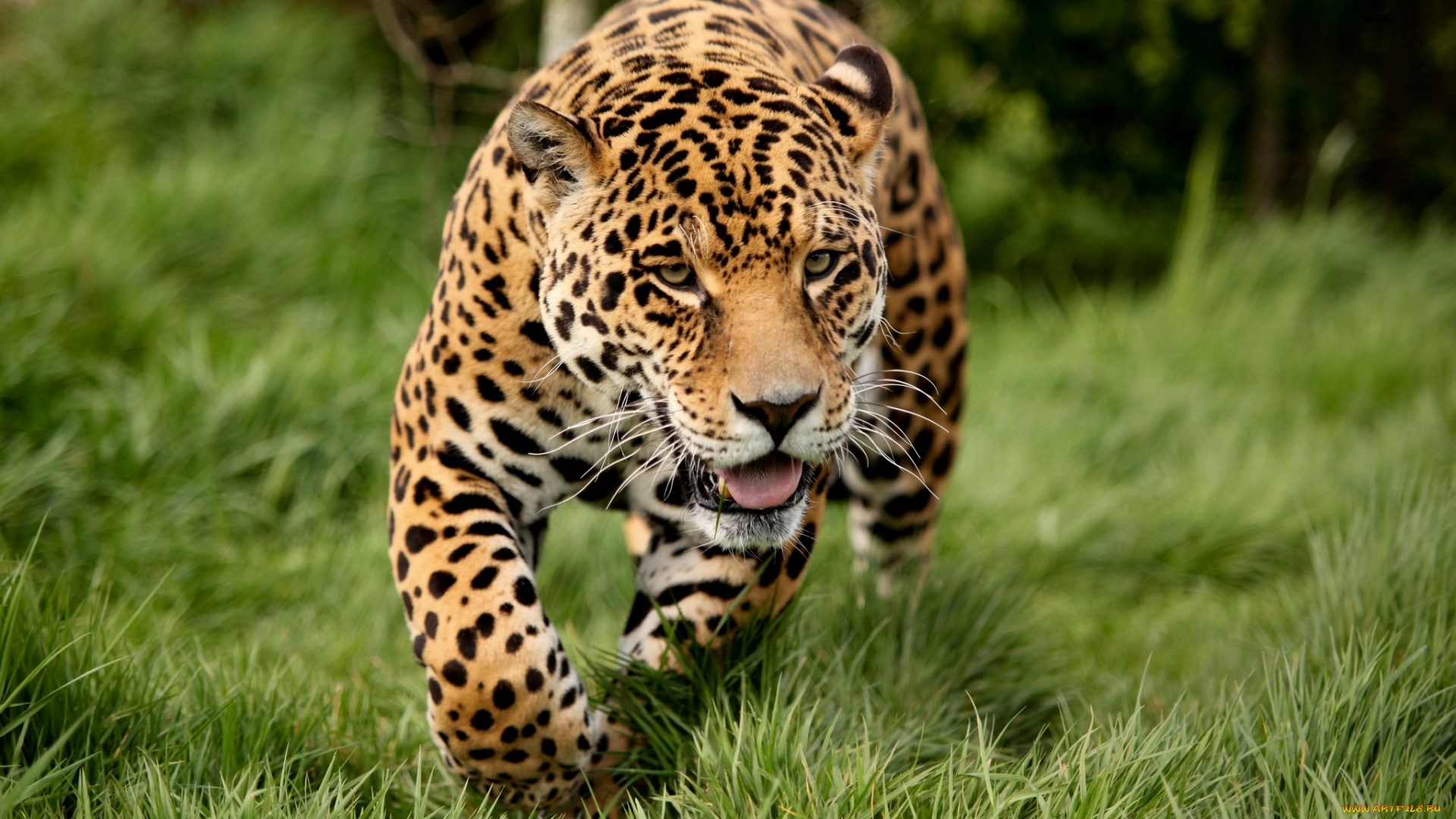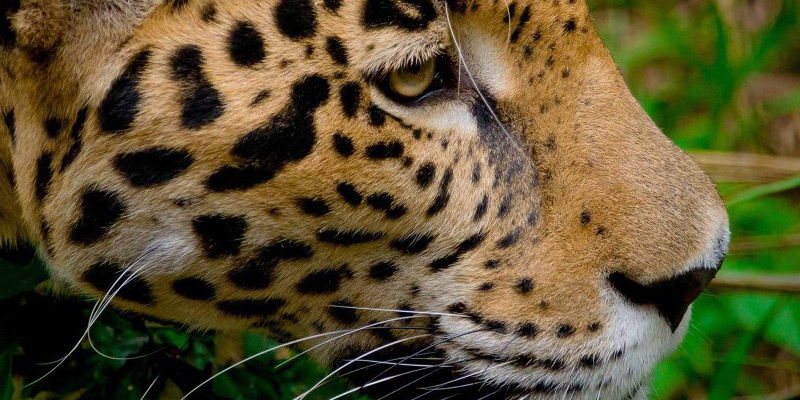It is always thrilling to see one of these in the wild, especially while driving through the rainforest trails in Guyana. Many travelers claim to have seen these big cats chilling on the Linden-Lethem trail. 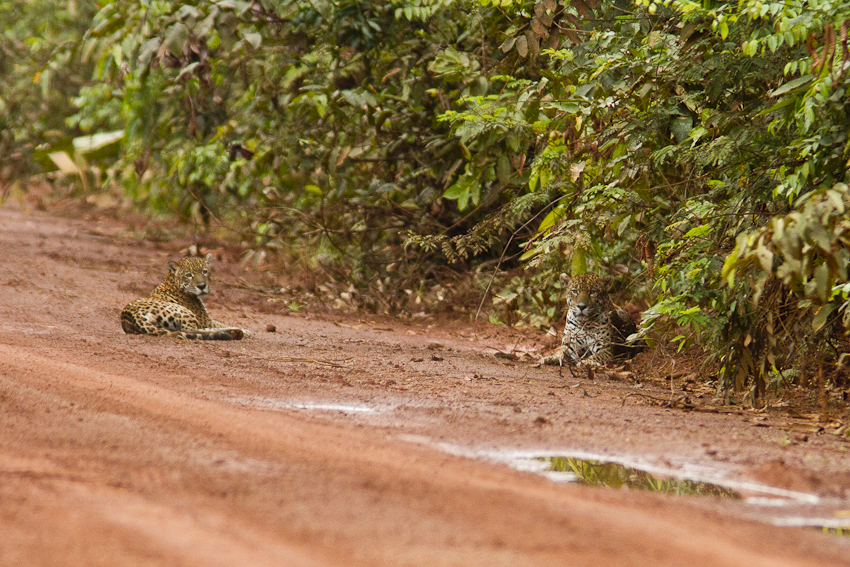
The jaguar is one of the largest carnivorous mammals in Central or North America and the largest cat in South America. Jaguars vary in color but generally they are tawny yellow with black rosettes all over their body. They usually have a white underbelly, the throat, outer surface of the legs and lower flanks are also white. Some jaguars vary from reddish brown to black. As for the black jaguars, their rosettes are visible at certain angles. Rosettes may include one or several dots and are great for camouflage in the forest.
Jaguars normally weigh about 123 to 212 lbs. and the females are usually 10 to 20 percent smaller than the males. The smallest female weigh about 79lbs while the larger males weigh as much as 348 lb. Their length varies from 5.3 to 6 ft. The jaguar’s legs are short but this is not entirely a disadvantage since their short legs helps them to perfectly adapt to climbing, swimming, crawling and even to capture their prey. When compared to a small tiger or lion in a similar weight range their legs are considerably shorter but the advantage is that it is thick and powerful. Their tail is the shortest of any big cat and it is about 45 to 75 cm in length. As for the jaguar’s head, it is sturdy and their jaw is extremely powerful having the third highest bite force of all felids. Compared to a leopard, the jaguar’s head is rounder and their limbs are shorter and stockier just as it is when compared to the the lion and tiger.
Quiz
Lets see if you can name these big cats (from left to right – comment below).

Diet and Prey of the Jaguar
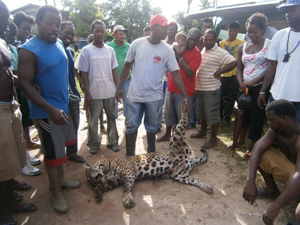
Jaguar killed after terrorizing villagers for months (Kaieteur News)
Jaguars are carnivores, feeding only on meat. They are the top predators in the forest and savannahs and instead of chasing their prey they stalk them. A unique technique for the jaguars is to use their powerful jaw and canine teeth to pierce the skull of their prey – it pierces directly through the temporal bones of the skull between the ears of the prey, piercing the brain. It’s very useful for cracking the shells of turtles, one of their favorite prey. The jaguar may leap onto the back of the prey and sever the cervical vertebrae, immobilizing the target. They also have the deep throat-bite and suffocation technique for killing preys. Other preys enjoyed by the jaguars are armadillos, monkeys, fish, deer, capybaras, tapirs, peccaries, anacondas. They prey on small species such as birds, mice and frogs and in areas where people live, the jaguars will also prey on domestic animals such as dogs and cattle. Sometimes these animals are killed by locals.
Reproduction of the Jaguar
Jaguars can live up to 12 years in the wild. Usually the females reach sexual maturity at about 2 to 2 ½ years. Their pregnancy lasts to about 90 to 110 days and their litter size vary from about 1 to 4 young. The kittens stay with their mother from 1 to 1 ½ years and breeding may occur year-round. The black jaguars may produce either black or spotted cubs, but a pair of spotted jaguars can only produce spotted cubs.
Habitat of the Jaguar
They usually live in the rainforests. The jaguar likes to live by swamps, rivers and in dense rainforest with thick cover for stalking prey.
Scientific Classification of the Jaguar
Jaguar – Panthera onca (Scientific name)
- Kingdom: Animalia (animals)
- Phylum: Chordata (vertebrates)
- Class: Mammalia (mammals)
- Order: Carnivora (carnivores)
- Suborder: Feliformia (cat-like)
- Family: Felidae (cats)
- Subfamily: Pantherinae (big cats)
- Genus: Panthera (big cats)
- Species: Panthera onca (Jaguar)
The Jaguar’s Cultural Impact on Guyana 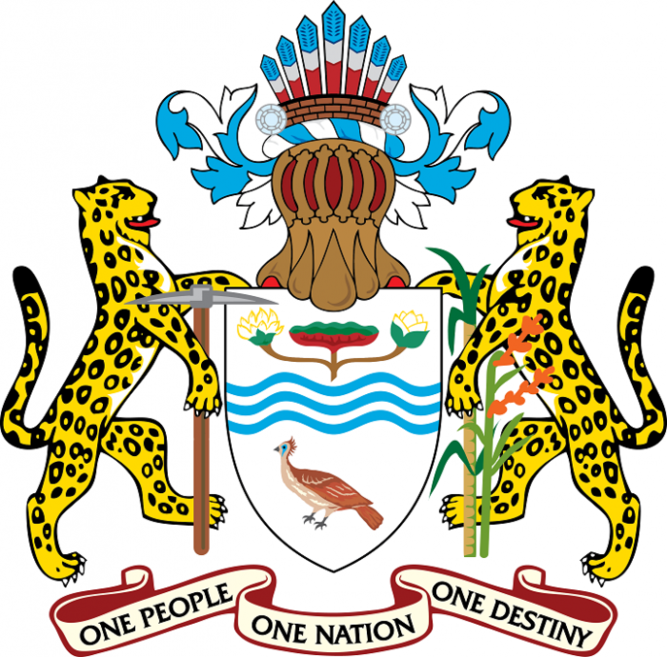
- The Coat of Arms of Guyana – The two jaguars on the Coat of Arms are supporting the shield and holding a pick axe, sugar cane, and a stalk of rice. These jaguars play an important role here because the shield represents the defense of the Nation of Guyana, the axe represents the labor of the Guyanese people and the sugar and rice represents the two major agricultural crops in Guyana.
- The Logo for the University of Guyana features these cats in a similar way like the Coat of Arms.
- The National Cricket Team is known as the “Guyana Jaguars”.
Article References
- https://en.wikipedia.org/wiki/Jaguar
- http://www.guyanapremier.com/single-post/2017/03/25/Guyanas-National-Animal-The-Jaguar
- http://www.travelguyana.org/national_symbol.php
- http://scribblefox.deviantart.com/art/Tepeyollotl-Aztec-Jaguar-God-124747631
- https://en.wikipedia.org/wiki/Tepeyollotl

